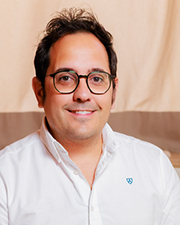News:
Spotlight Content
Posted: February 20, 2009
Not Business as Usual is business as usual at AIANY
In an effort to be pro-active in these economically trying times, the New York AIA has created the Not Business as Usual lunch initiative to address the recession's impact on the New York design community. Within our industry, projects have been put on hold or stopped, new commissions have stalled, and firms are downsizing with alarming frequency. Rather than sit back and moan about this "be brave" new world, we at the AIANY rattled our rulers and came up with what has been to date a very successful lunch forum program - offering delicious (and donated) food and a venue to discuss problem-solving, action planning and coping strategies for the economic downturn.
The lunch time initiative launched in December 2008 in an effort to unite the architecture and design community in this challenging climate with a series of dialogues and programs to address how we can create new opportunities for professional employment and community service. Addressing the logistical and social needs of the recently unemployed, the lunch forums explore avenues of alternative employment through both in-the-box and out-of-the-box thinking. The good news is out of these demanding times, we are working harder at finding more creative solutions to the problems at hand.
The every other Wednesday sessions have grown exponentially in size and impact since the first one on December 18. Luncheons are very well attended with a diverse mix of working and out of work designers and architects, as well as professionals in related fields. Each lunch session is devoted to a specific focus on five themes: resume development and presentation skills; training programs; volunteer opportunities; advocacy; and employment listings. The forums generate ideas and healthy exchanges as well as provide networking outlets. Progress reports are provided on all developments at each session and handed out at the following session as well as posted on the AIA website.
The most recent Not Business as Usual notes posting, from the January 7 lunch, is five pages of review - distilling discussion from the different tables that were organized to cover each of the themes. From the Advocacy table came three primary ideas, as well as five additional suggestions on advocacy efforts that ranged from energy surveys to competitions supported by the AIA Center. The Volunteer Possibilities table discussed opportunities for volunteerism and limited paid venues, including working with city and county community boards and investigating various mentoring programs. The Presentation Skills table, led by Greg Silk of API Partners and Dana Byrne of RMJM North America, emphasized the important of communication, grooming, and portfolio presentation skills as well as developing skills such as LEED certification and Building Information Modeling (BIM) that will be critical in the future. The Training table, led by Paul Seletsky, senior manager of Digital Design Technologies at Skidmore Owings and Merrill, discussed ways to create a re-tooling program for the employed, unemployed and recently graduated students to bring a new service to the architecture industry. And, finally, the Website table reviewed the overall features of the new Not Business as Usual site - created in conjunction with the Architects Newspaper - expected to launch in February.
The latest luncheon, entitled the Advocacy lunch, was held on February 11 and focused on the federal and local government efforts to stimulate the economy and how these efforts affect the design professionals. The AIA NY staff and board members, including myself, reported on the recent AIA Grassroots Advocacy convention that we attended in Washington, D.C. Feedback from the lunch group was welcomed as we encouraged our industry professionals to offer views on how the AIA elected officials and city agencies can support design professionals in this challenging economic climate. As the lunch attendees offered opinions and suggestions, it was rewarding to note the dynamic forum that the AIA NY's Not Business As Usual luncheons has created and how well it is being used. I am proud of how we have initiated discourse that will hopefully lead to better practices within the industry and more functional, beautiful, humanistic, and sustainable buildings in the future.
Sherida Paulsen, FAIA is the 2009 president of the New York Chapter of the American Institute of Architects, New York, N.Y.
Tags:
Spotlight Content
MORE FROM Spotlight Content
Check out NYREJ's Developing Westchester Spotlight!
Check out NYREJ's Devloping Westchester Spotlight!
NYREJ’s Developing Westchester Spotlight is Out Now!
Explore our Developing Westchester Spotlight, featuring exclusive Q&As with leading commercial real estate professionals. Gain insight into the trends, challenges, and opportunities shaping New England’s commercial real estate landscape.

Quick Hits
Columns and Thought Leadership

How much power does the NYC mayor really have over real estate policy? - by Ron Cohen
The mayor of New York City holds significant influence over real estate policy — but not absolute legislative power. Here’s how it breaks down:
Formal Legislative Role
• Limited direct lawmaking power: The NYC Council is the primary

The strategy of co-op busting in commercial real estate - by Robert Khodadadian
In New York City’s competitive real estate market, particularly in prime neighborhoods like Midtown Manhattan, investors are constantly seeking new ways to unlock property value. One such strategy — often overlooked but

Oldies but goodies: The value of long-term ownership in rent-stabilized assets - by Shallini Mehra
Active investors seeking rent-stabilized properties often gravitate toward buildings that have been held under long-term ownership — and for good reasons. These properties tend to be well-maintained, both physically and operationally, offering a level of stability

Properly serving a lien law Section 59 Demand - by Bret McCabe
Many attorneys operating within the construction space are familiar with the provisions of New York Lien Law, which allow for the discharge of a Mechanic’s Lien in the event the lienor does not commence an action to enforce following the service of a “Section 59 Demand”.






.png)


.jpg)
.gif)